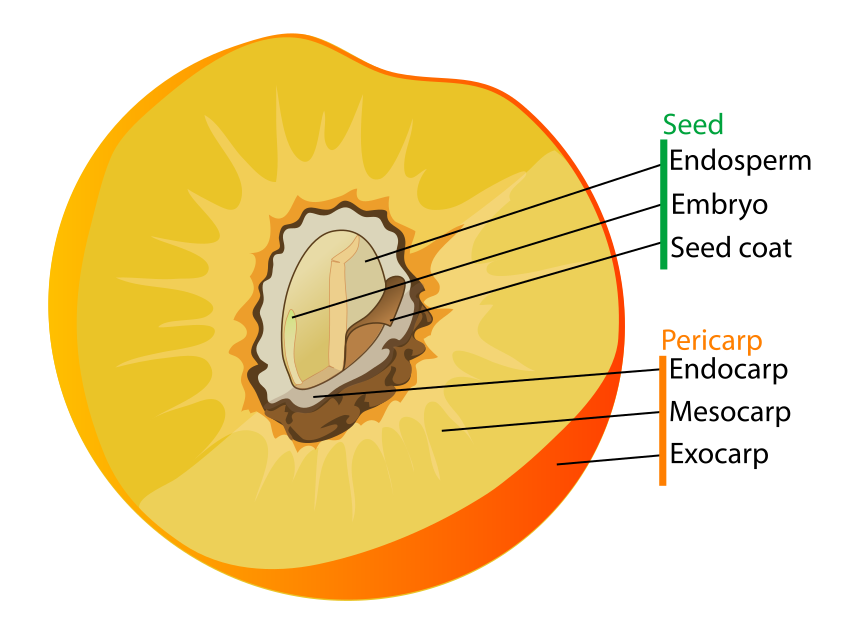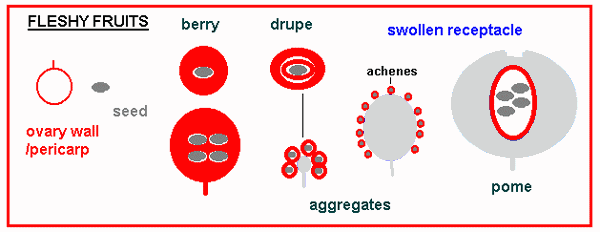Tomatoes are Fruits and Strawberries are Not
by Ray Novitske, Fairfax Master Gardener
 A chef pondering vegetables for a dinner salad might consider tomatoes, peppers, zucchini and cucumbers. A botanist would consider these as ingredients for a fruit salad. This is because, scientifically speaking, all these ingredients are classified as fruits. The culinary world and scientific world do not classify food items in the same way — it all depends on whether you are working in a kitchen or a lab.
A chef pondering vegetables for a dinner salad might consider tomatoes, peppers, zucchini and cucumbers. A botanist would consider these as ingredients for a fruit salad. This is because, scientifically speaking, all these ingredients are classified as fruits. The culinary world and scientific world do not classify food items in the same way — it all depends on whether you are working in a kitchen or a lab.
In popular culture, we mostly consider vegetables as flavorless and tart, and eaten as part of a main meal. Fruits are thought of as sweeter ingredients saved for desserts after a meal. Technically speaking, a fruit is defined as the mature ovary of a flowering plant that surrounds a seed and develops after fertilization. A vegetable is defined as the edible portion of a plant, such as the leaves (spinach), stems (celery), roots (carrots), tubers (potatoes), bulbs (onions) or flowers (broccoli).
There are different types of fruits that can be classified further, but we want to highlight berries and drupes. A berry contains one or many seeds surrounded by a fleshy, soft material called a mesocarp. Grapes, tomatoes, avocados, bananas, peppers and cucumbers are all berries, while raspberries and blackberries are not. A drupe is a one-seed fruit that develops from one flower having a single ovary. Cherries, plums, olives and other fruits containing a stone core that has a seed are drupes. Another type of fruit is a pome — where the ovary is surrounded by the mesocarp, and also by a fleshy receptacle tissue that is part of the floral tube. Apples, roses, pears and quince are pomes.

Drupe showing mesocarp
Then there are the dry fruits, such as nuts and legumes. Legumes are formed and wrapped into leaves that form pods, like beans. Nuts have a hard husk enclosing them, like acorns, chestnuts and filberts. Almonds and pecans are not really nuts but are considered drupes, like stone fruits, with their edible seeds as the “nut” surrounded by a mesocarp. Peanuts are really legumes inside a pod. Yes, these are all fruits.
Not everyone has bought into the terminology or the scientific classification. In 1893, the Supreme Court was asked if a tomato was a fruit or vegetable. The case arose from a dispute regarding a tax tariff on imported vegetables but not on fruits. One importer wanted to avoid paying the tax on tomatoes. The court ruled that for tax purposes, the tomato was defined as a vegetable, and therefore the import duty applied to it.
A drupe is composed of three distinct layers: an outer skin or exocarp, a fleshy middle layer or mesocarp and a hard, woody layer (endocarp) surrounding the seed. Raspberries and blackberries, as previously mentioned, are not berries. They are really drupes (or druplets because of their size). Each tiny druplet contains one seed developing from one ovary, but with many ovaries on a single flower. Clustered together, these dozens of druplets form what we call a “berry,” but technically it is an aggregate cluster of many small drupe fruits.

Diagram comparing different types of fruits
Strawberries are even more different and confusing. The sweet, red juicy part we eat is a fleshy receptacle. When a strawberry flower is pollinated, the fruit does not increase in size. The many ovaries inside form separate dry fruits called achenes. The actual fruits are the little things we see as seeds on the outside of each strawberry. Sunflowers also form achenes.
To be correct, we gardeners could consider having fleshy receptacle shortcakes in the spring, drupe pie a la mode in summer, and swollen ovary fruit sauce on our pizzas. But, why make us gardeners look any weirder? Let’s just be content that we know more about fruits and vegetables than the average person and go along with the mainstream.
References
• Botany 115 Terminology – Fruit Terminology Part 4, Palomar College
• Frequently Asked Questions, Vegetable Research & Information Center, University of California
Cooperative Extension
• You Say Tomato, I Say Fruit, Katelyn Frierotte, University of Notre Dame
• Why Do Strawberries Have Their Seeds on the Outside?, Matt Shipman, NC State University
• Berried Meaning, James Morris, Brandeis University
• Identification of Major Fruit Types, Palomar College